Top 9 Largest Stadiums In The World
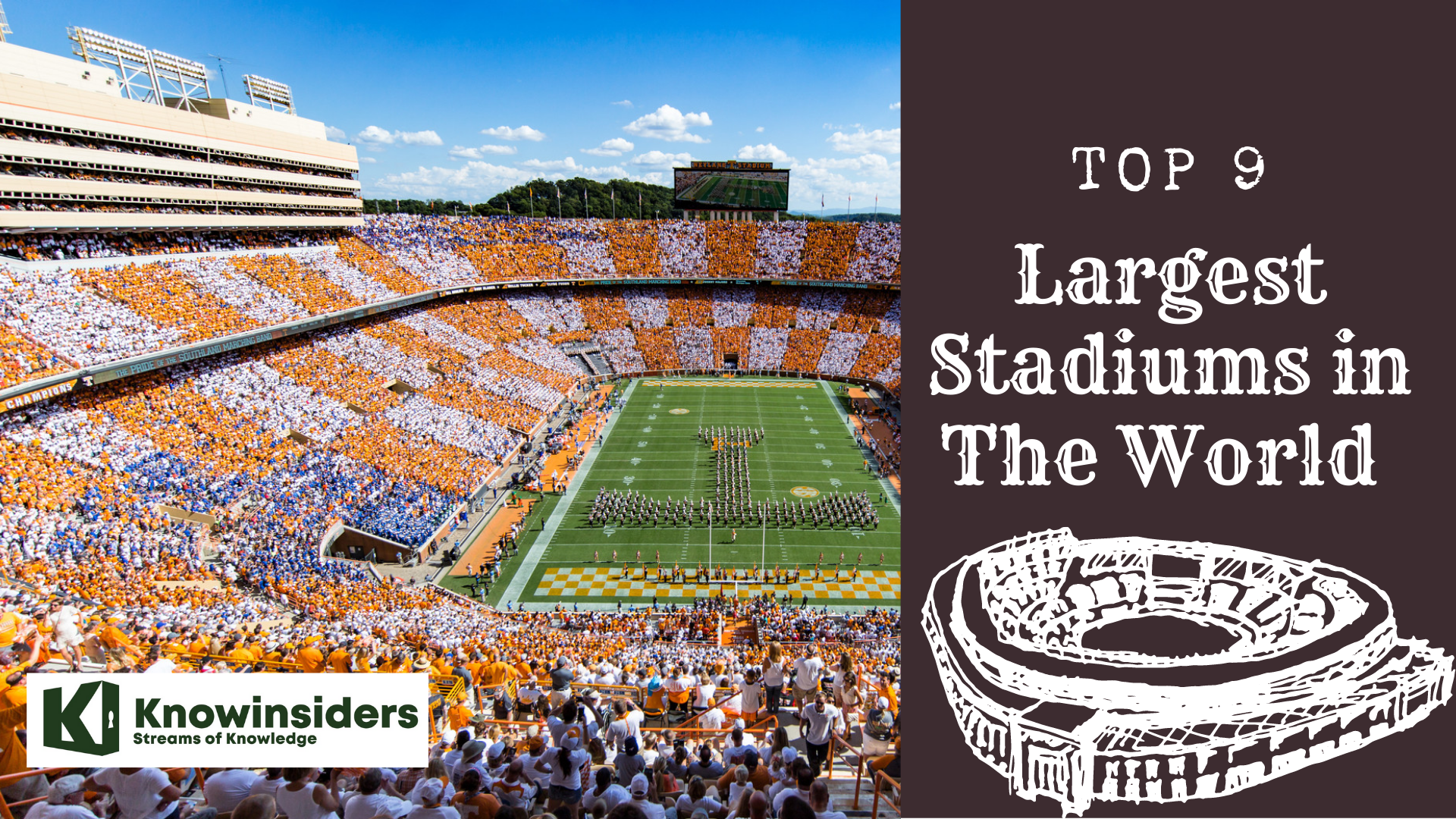 |
| Top 9 largest stadiums in the world |
Since ancient times, people have gathered in large stadiums to watch various sporting events. Today, fans watch live sporting events in stadiums that are large enough to fit crowds of 100,000+. Many of these stadiums have glitzy, state-of-the-art scoreboards, viewing screens, and private boxes; everything you would expect in a world-class sporting venue.
But ultimately, it is the sports played in these stadiums that are the main attraction.
Here is the list of top 9 biggest and largest football stadiums in the world, with insane capacity.
List of top 9 largest stadiums in the world
9. Darrell K Royal-Texas Memorial Stadium - 100,119
8. Tiger Stadium - 102,321
7. Neyland Stadium - 102,455
6. Ohio Stadium - 102,780
5. Kyle Field - 102,733
4. Beaver Stadium - 106,572
3. Michigan Stadium - 107,601
2. Sardar Patel Stadium - 110,000
1. Rungrado May Day Stadium - 150,000
The top 9 largest stadiums in the world in detail
9. Darrell K Royal-Texas Memorial Stadium - 100,119
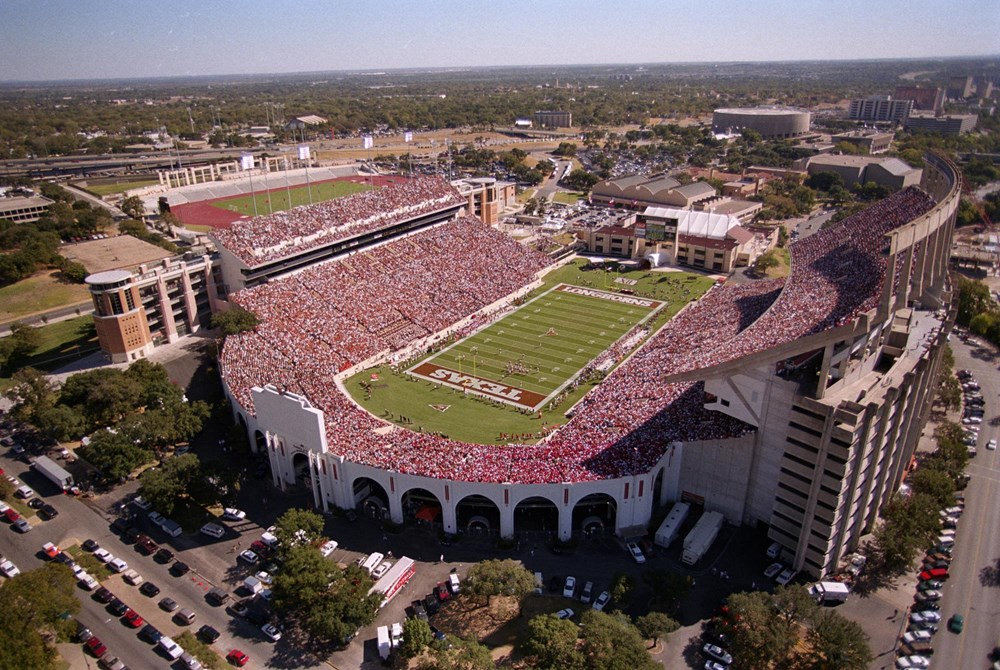 |
| Photo: University of Texas Athletics |
Darrell K Royal–Texas Memorial Stadium (formerly War Memorial Stadium, Memorial Stadium, and Texas Memorial Stadium), located in Austin, Texas, on the campus of the University of Texas, has been home to the Longhorns football team since 1924. The stadium has delivered a home field advantage with the team's home record through November 17, 2018 being 375–117–10 (76.4%). Prior to construction to build permanent south end zone seating and luxury suites, the official stadium seating capacity was 100,119, which made the stadium the largest in the Big 12 Conference, the eighth largest stadium in the United States, and the ninth largest stadium in the world.
The DKR–Texas Memorial Stadium attendance record of 103,507 spectators was set on September 15, 2018, when Texas played The University of Southern California (Texas 37–14 victory).
8. Tiger Stadium - 102,321
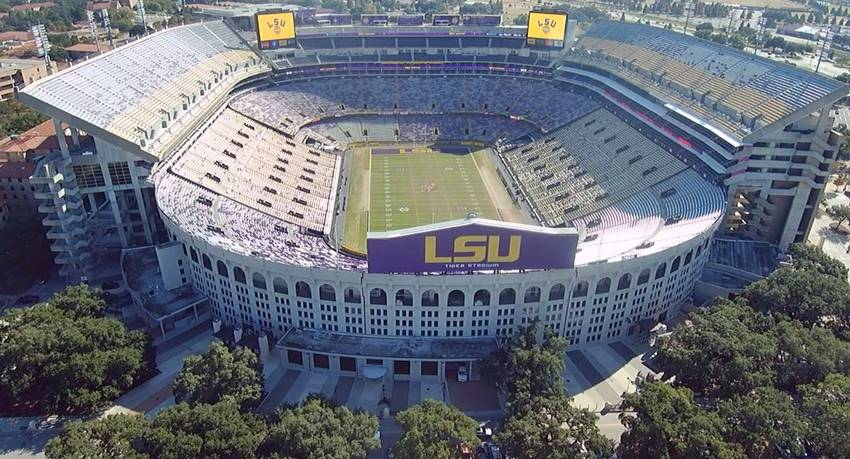 |
| Photo: Crescent City Sports |
Tiger Stadium, previously known as Navin Field and Briggs Stadium, was a baseball park located in the Corktown neighborhood of Detroit, Michigan. It hosted the Detroit Tigers of Major League Baseball from 1912 to 1999, as well as the Detroit Lions of the National Football League from 1938 to 1974. It was declared a State of Michigan Historic Site in 1975 and has been listed on the National Register of Historic Places since 1989. The stadium was nicknamed "The Corner" for its location on Michigan Avenue and Trumbull Avenue.
The last Tigers game at the stadium was held on September 27, 1999. In the decade after the Tigers vacated the stadium, several rejected redevelopment and preservation efforts finally gave way to demolition. The stadium's demolition was completed on September 21, 2009, though the stadium's actual playing field remains at the corner where the stadium stood.
In 2018, the site was redeveloped for youth sports.
7. Neyland Stadium - 102,455
 |
| Photo: University of Tennessee Athletics |
Neyland Stadium is a sports stadium in Knoxville, Tennessee, United States. It serves primarily as the home of the Tennessee Volunteers football team, but is also used to host large conventions and has been a site for several National Football League (NFL) exhibition games. The stadium's official capacity is 102,455. Constructed in 1921 as Shields–Watkins Field (which is now the name of the playing surface), the stadium has undergone 16 expansion projects, at one point reaching a capacity of 104,079 before being slightly reduced by alterations in the following decade. Neyland Stadium is the fifth largest stadium in the United States, the seventh largest stadium in the world, and the second largest stadium in the Southeastern Conference. The stadium is named for Robert Neyland, who served three stints as head football coach at the University of Tennessee between 1926 and 1952.
6. Ohio Stadium - 102,780
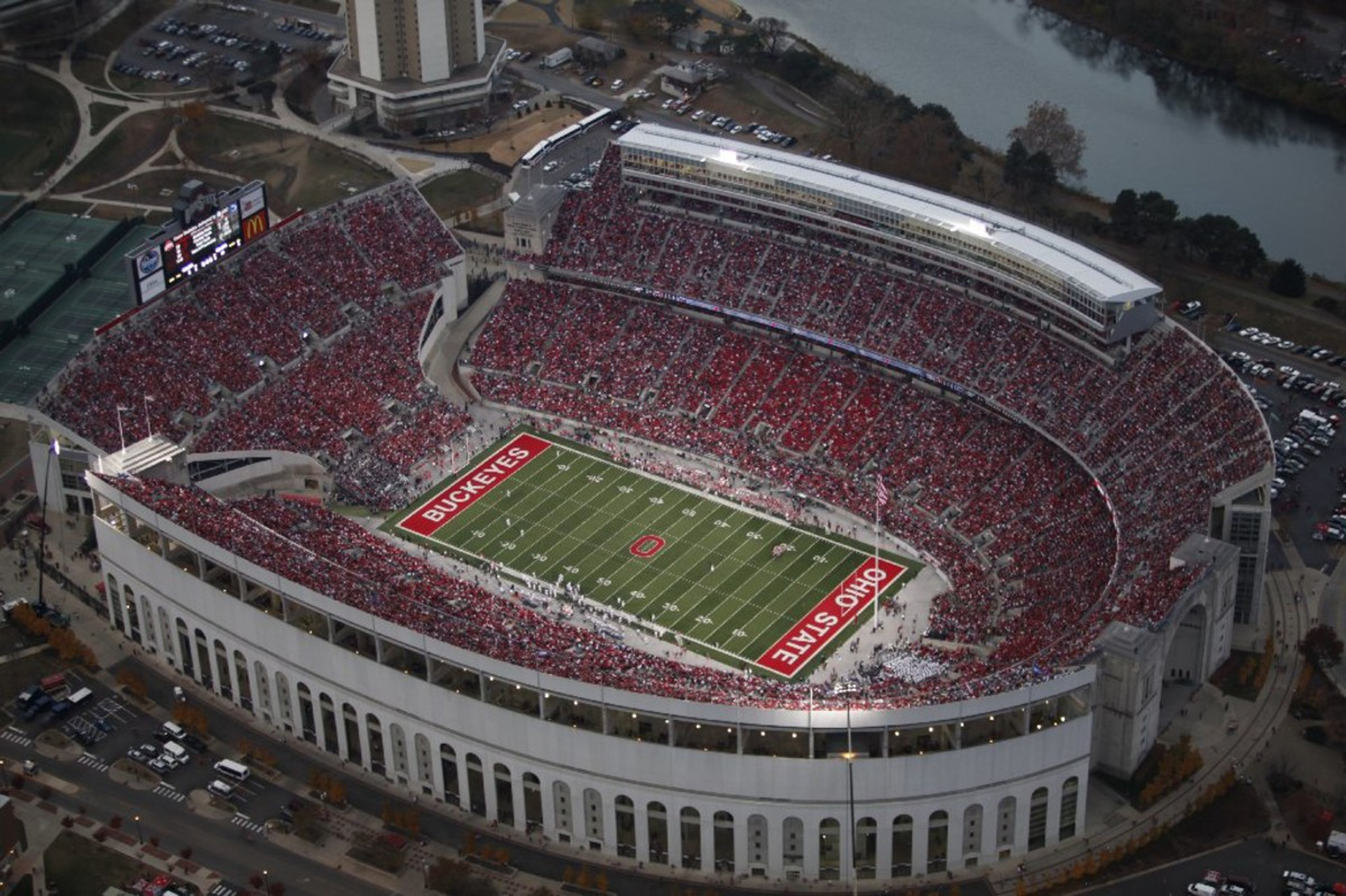 |
| Photo: Ohio State News |
Ohio Stadium is an American football stadium in Columbus, Ohio, on the campus of The Ohio State University. It primarily serves as the home venue of the Ohio State Buckeyes football team and is also the site for the university's Spring Commencement ceremonies each May. Common nicknames for the stadium include "the Horseshoe", "the Shoe", and "the House That Harley Built".
From 1996 to 1998, Ohio Stadium was the home venue for the Columbus Crew of Major League Soccer prior to the opening of Columbus Crew Stadium in 1999. The stadium also was the home venue for the OSU track and field teams from 1923 to 2001. In addition to athletics, Ohio Stadium is also a concert venue, with U2, Taylor Swift, The Rolling Stones, Genesis, Pink Floyd, and Metallica among the many acts to have played at the venue.
The stadium opened in 1922 as a replacement for Ohio Field and had a seating capacity of 66,210. In 1923, a cinder running track was added that was later upgraded to an all-weather track. Seating capacity gradually increased over the years and reached a total of 91,470 possible spectators in 1991. Beginning in 2000, the stadium was renovated and expanded in several phases, removing the track and adding additional seating, which raised the capacity to 101,568 by 2001 and to 102,329 in 2007. In 2014, additional seating was added in the end zone, raising the official capacity to 104,944. Another renovation to add more luxury suites began in 2017 and will eventually lead to a decrease of 2,600 seats. It is the largest stadium by capacity in the state of Ohio, and the third largest on-campus football stadium in the United States. Ohio Stadium was added to the National Register of Historic Places by the National Park Service on March 22, 1974.
5. Kyle Field - 102,733
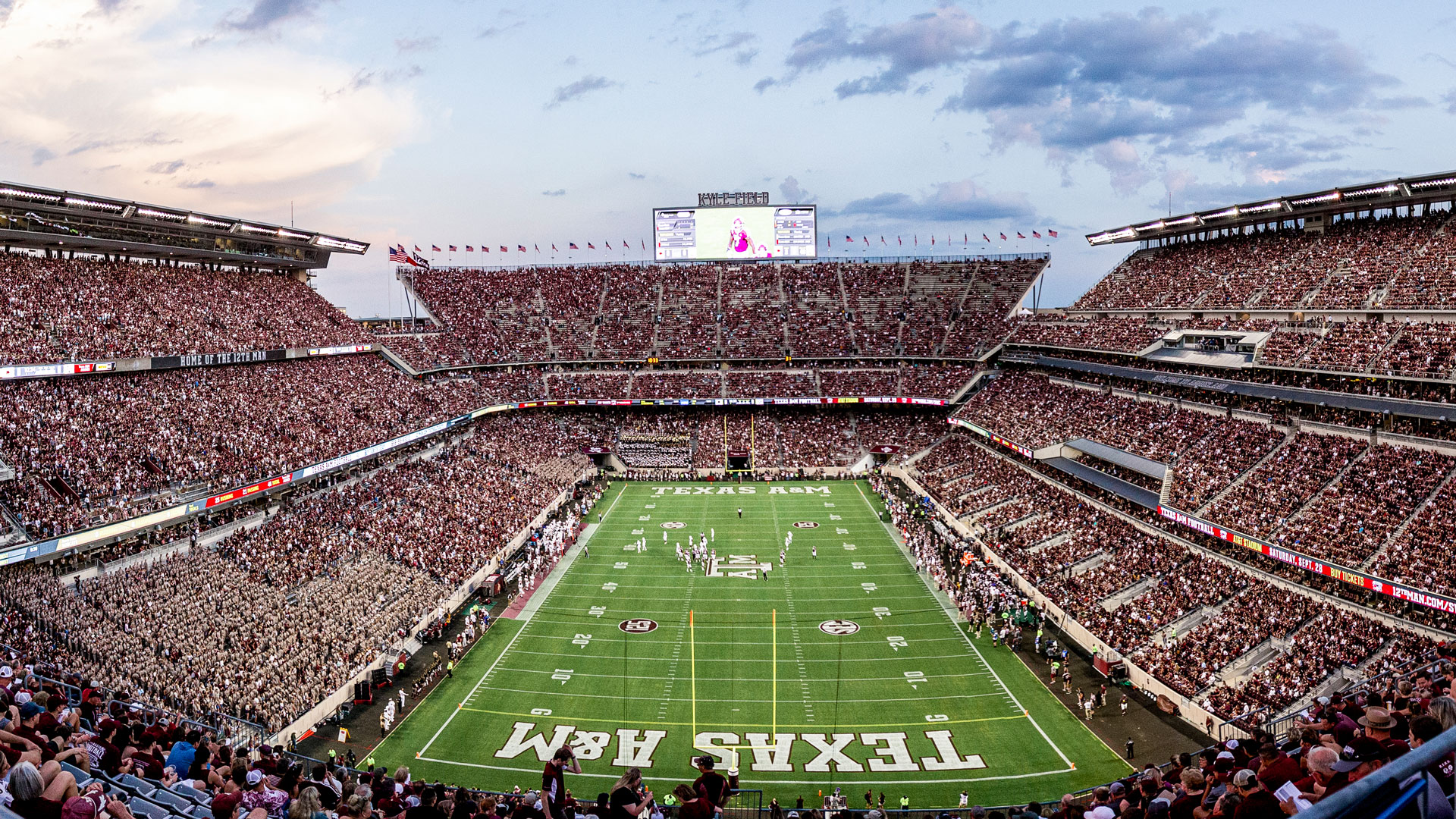 |
| Photo: Texas A&M Athletics |
Kyle Field is the football stadium located on the campus of Texas A&M University in College Station, Texas, United States. It has been the home to the Texas A&M Aggies football team in rudimentary form since 1904, and as a permanent concrete stadium since 1927. The seating capacity of 102,733 in 2015 makes it the largest in the Southeastern Conference and the fourth-largest stadium in the NCAA, the fourth-largest stadium in the United States, and the sixth-largest non-racing stadium in the world and the largest in Texas.
Kyle Field's largest game attendance was 110,633 people when Texas A&M lost to the Ole Miss Rebels by the score of 35–20 on October 11, 2014. This was the largest football game attendance in the state of Texas and SEC history.
4. Beaver Stadium - 106,572
 |
| Photo: Getty Images |
Beaver Stadium is an outdoor college football stadium in the eastern United States, located on the campus of Pennsylvania State University in State College, Pennsylvania. It has been home to the Penn State Nittany Lions of the Big Ten Conference since 1960, though some parts of the stadium date back to 1909. It was also the site of university commencements until 1984. The stadium, as well as its predecessors, is named after James A. Beaver (1837–1914), a governor of Pennsylvania (1887–91), president of the university's board of trustees, and native of nearby Millerstown.
Beaver Stadium has an official seating capacity of 106,572, making it currently the second largest stadium in the Western Hemisphere and the fourth largest in the world. Its natural grass playing field is aligned northwest to southeast at an approximate elevation of 1,150 feet (350 m) above sea level.
Beaver Stadium is widely known as one of the toughest venues for opposing teams in collegiate athletics. In 2008, it was recognized as having the best student section in the country for the second consecutive year.
3. Michigan Stadium - 107,601
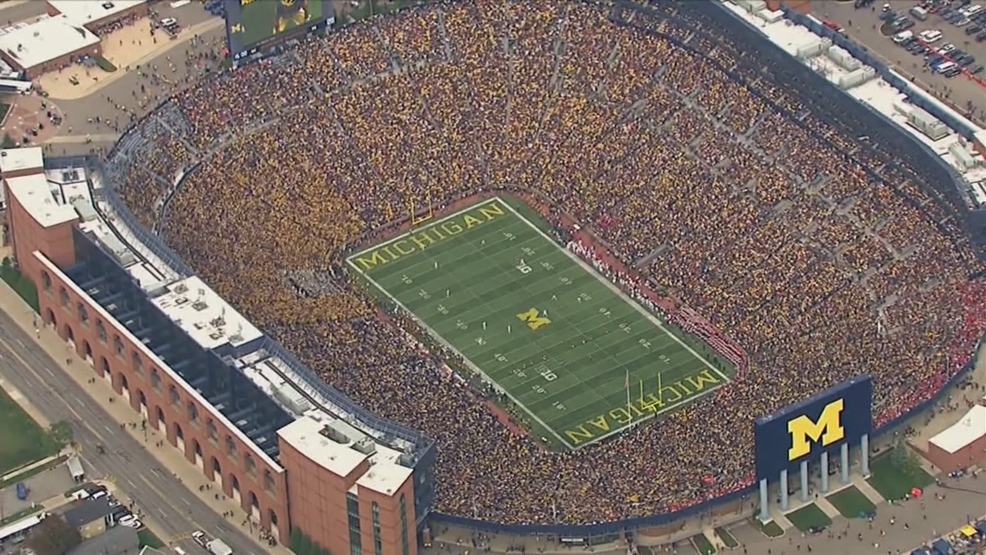 |
| Photo: WSBT |
Michigan Stadium, nicknamed "The Big House",[6] is the football stadium for the University of Michigan in Ann Arbor, Michigan. It is the largest stadium in the United States and Western Hemisphere, the third largest stadium in the world, and the 34th largest sports venue. Its official capacity is 107,601, but has hosted crowds in excess of 115,000.
Michigan Stadium was built in 1927 at a cost of $950,000 (equivalent to $11.4 million in 2019) and had an original capacity of 72,000. Prior to the stadium's construction, the Wolverines played football at Ferry Field. Every home game since November 8, 1975 has drawn a crowd in excess of 100,000, an active streak of more than 200 contests. On September 7, 2013, the game between Michigan and the Notre Dame Fighting Irish attracted a crowd of 115,109, a record attendance for a college football game since 1948, and an NCAA single-game attendance record at the time, overtaking the previous record of 114,804 set two years previously for the same matchup.
2. Sardar Patel Stadium - 110,000
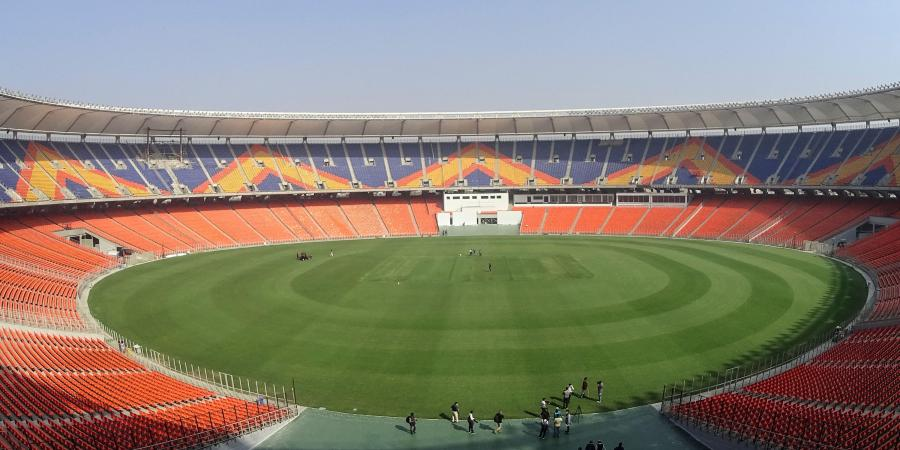 |
| Photo: The New Indian Express |
The Narendra Modi Stadium, commonly known as the Motera Stadium, is a cricket stadium situated inside the Sardar Vallabhbhai Patel Sports Enclave in Ahmedabad, Gujarat, India. As of 2021, it is the largest cricket stadium in the world and the largest stadium in the world, with a seating capacity of 132,000 spectators. It is owned by the Gujarat Cricket Association and is a venue for Test, ODI, and T20I cricket matches.
The stadium was constructed in 1983 and was first renovated in 2006. It became the regular venue for international matches in the city. In 2015, the stadium was closed and demolished before being completely rebuilt by February 2020, with an estimated cost of ₹800 crore (US$110 million).
Apart from cricket, the stadium has hosted several programs arranged by the Government of Gujarat. It has hosted matches during the 1987, 1996, and 2011 Cricket World Cups. The pitch used to favour bowlers previously but has recently hosted competitive games. As of 2020, the stadium has hosted 12 Tests, 23 ODIs, and 1 T20I match.
1. Rungrado May Day Stadium - 150,000
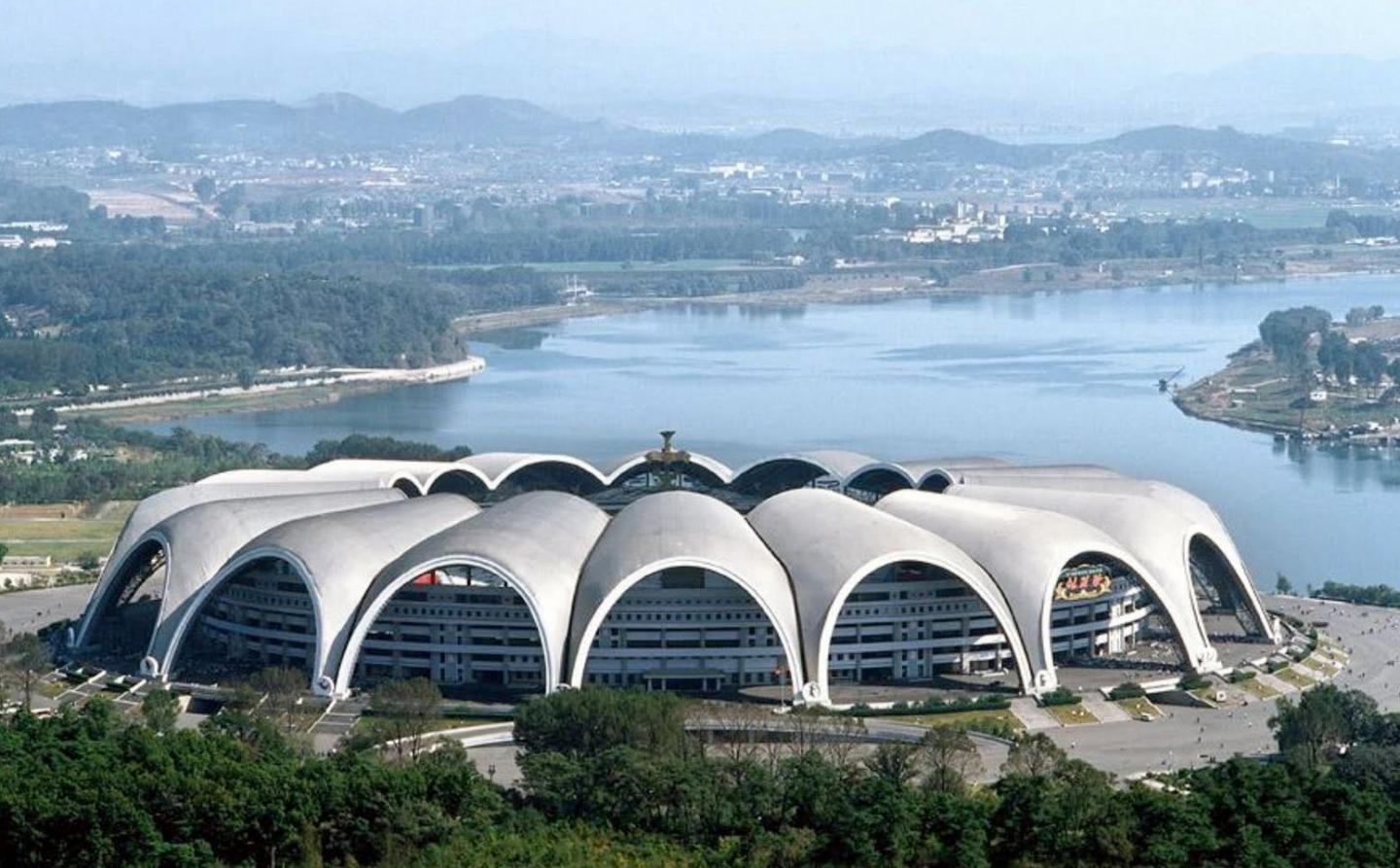 |
| Photo: Getty Images |
The Rungrado 1st of May Stadium is a multi-purpose stadium occupying an area of 20.7 hectares (51 acres) on Rungra Island, Pyongyang, North Korea. It opened on 1 May 1989, with its first major event being the 13th World Festival of Youth and Students. It is the second largest stadium in the world by seating capacity (after India's Narendra Modi Stadium), considering the re-estimated number of seats in 2014, and the largest stadium in the world considering its official seating capacity.
The Rungrado May Day Stadium is the largest stadium in the world. Its official crowd capacity is 150,000, though it is thought that the actual capacity of the venue is closer to 114,000, which still makes it the world’s biggest stadium by capacity. The stadium is shaped like a parachute, though it was intended to resemble a magnolia flower. It is designed to host numerous types of sporting events, including football (soccer) matches involving North Korea’s national team. More often than not, however, the stadium is used to host military parades. In 1995, the stadium posted a world attendance record of 190,000 during a wrestling event at the facility.
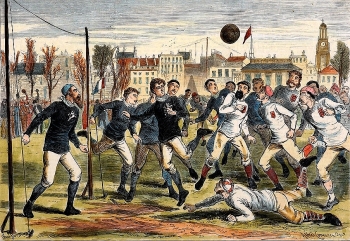 The First international Football Match in the history The First international Football Match in the history November 30, 1872 was considered an important milestone in the football history marking the first international match between Scotland and England. What do we ... |























